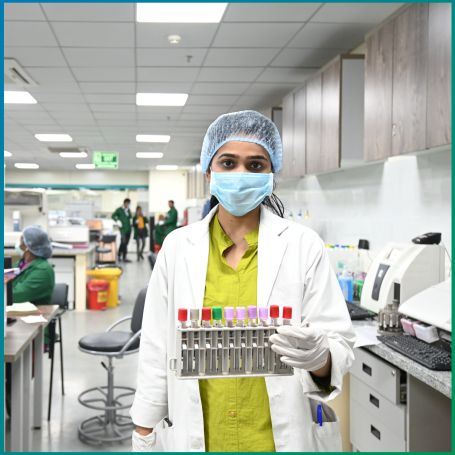
The C/S in this test stands for Culture and Sensitivity.

The C/S Conjunctival Swab Test is a diagnostic procedure used to detect infections in the conjunctiva of the eye, which is the thin, transparent membrane that lines the inner surface of the eyelids and covers the white part of the eyeball. The test is primarily used to identify microbial infections caused by bacteria, viruses, or fungi that may affect the eye, leading to conditions such as conjunctivitis (commonly known as pink eye), keratitis, or other ocular infections.
1] Preparation: The healthcare provider will ask the patient to sit comfortably, and in most cases, the eyelids will be gently pulled back to expose the conjunctiva. The test is non-invasive, but the patient may experience some mild discomfort during the swabbing.
2] Swab Collection: A sterile swab is used to collect a sample of the discharge, secretions, or cells from the conjunctiva (the membrane covering the eye). The swab is typically rubbed gently on the inner surface of the eyelid or the eye’s surface where the infection is most prominent. This procedure is quick and involves minimal discomfort.
3] Sample Transport: The swab is carefully placed into a sterile container and transported to a microbiology laboratory for culturing. It's essential that the sample is handled properly to prevent contamination and ensure accurate results.
4] Laboratory Culturing: In the laboratory, the sample is cultured on a variety of media to promote the growth of any bacteria, viruses, or fungi present. This step allows the laboratory technicians to identify the specific microorganism causing the infection.
5] Sensitivity Testing: Once the pathogen is identified, the laboratory performs sensitivity testing to determine which antibiotics or antifungal drugs are most effective against the organism. This helps guide the treatment plan by ensuring that the correct medication is prescribed.
6] Reporting Results: After culturing and sensitivity testing, the results are compiled into a report, which is shared with the treating physician. The report will indicate the type of microorganism found and the recommended treatment options based on the sensitivity profile.
1] Identification of Pathogen: The test identifies the exact microorganism (bacteria, virus, or fungus) causing the infection, which helps in making an accurate diagnosis.
2] Antibiotic or Antifungal Sensitivity: Sensitivity testing will reveal which medications are effective against the identified pathogen, allowing for targeted treatment that is more likely to result in a cure.
3] Treatment Guidance: The results provide your healthcare provider with the necessary information to tailor your treatment plan, ensuring that the right antibiotics or antifungals are used.
Choosing Diagnopein Diagnostic Centre in Pune for your C/S Conjunctival Swab Test ensures that you receive accurate, timely, and reliable results with the highest level of care. At Diagnopein, we utilize advanced diagnostic technology and adhere to the highest laboratory standards to ensure precise identification of pathogens causing eye infections. Our team of experienced healthcare professionals and lab technicians work diligently to provide quick turnaround times, so you can start the right treatment without unnecessary delays. Additionally, Diagnopein offers convenient home sample collection services, making it easier for you to get tested without having to visit a clinic. We prioritize patient comfort, confidentiality, and detailed guidance through every step of the testing process. Whether you are dealing with a recurrent infection or a new eye concern, Diagnopein’s personalized care and expert testing help ensure the most effective treatment plan for a fast and full recovery.
1. Culture Method
2. Sample
3. Colony Count
4. Organism(s) Isolated
5. Culture Report: Culture yields growth of
6. Culture isolated after 7 days :
7. Culture isolated after 14 days:
8. Culture isolated after 21 days:
9. Ampicillin
10. Amikacin
11. Amoxicillin clavulanate
12. cefoperazon+sulbactam
13. Cefuroxime
14. Cefepime
15. Cefotaxime
16. Ciprofloxacin
17. Ertapenem
18. Gentamicin
19. Imipenem
20. Meropenem
21. Norfloxacin
22. Nitrofurantoin
23. Piperacillin-tazobactam
24. Trimethoprim-Sulfamethoxazole (Cotrimoxazole)
It helps diagnose eye infections accurately, differentiating between bacterial, viral, or fungal causes. The sensitivity testing also ensures the correct treatment is prescribed, especially in cases of resistant infections.
A healthcare provider uses a sterile swab to collect a sample from the infected eye. The sample is then sent to the lab for culturing and sensitivity testing to identify the pathogen.
No special preparation is required for the C/S Conjunctival Swab Test. However, it's important to inform your healthcare provider of any medications you're currently using.
It can diagnose conditions like bacterial conjunctivitis, viral conjunctivitis, keratitis, and fungal eye infections.